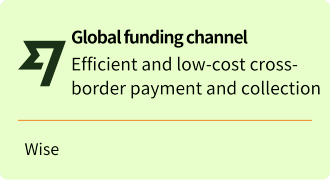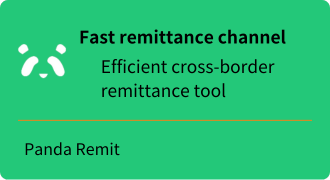US Stock Dividend Guide: Maximizing Your Returns
[DISCLAIMER] This article is for educational and informational purposes only and does not constitute investment advice. Readers should consult with qualified financial professionals before making any investment decisions.
"Dividend received!" Whenever I see this notification, my heart leaps with joy. But have you ever been puzzled by a sudden stock price drop without any apparent negative news? Or perhaps you bought a stock known for dividends but didn't receive any? As an investor immersed in the US stock market for years, I know these confusions stem from the intricacies of the dividend process.
Today, let's unveil the mysteries of US stock dividends, analyzing every step from the ex-dividend date to the final payment date. Whether you're a newcomer to the market or a seasoned investor looking to optimize your strategy, this article will open a door to smarter investing.
Ⅰ. Key Dates Explained
1.1 Ex-Dividend Date
This is the most crucial date. On this day, the stock price theoretically decreases by the dividend amount. I remember my confusion the first time I encountered an ex-dividend date: Why did my stock suddenly drop? Well, it's normal!
Important note: You must buy the stock before the market close on the day before the ex-dividend date to receive the dividend.
1.2 Record Date
Usually one trading day after the ex-dividend date. On this day, the company takes a "snapshot" to determine which shareholders are eligible for dividends. Notably, since May 28, 2024, the US securities market has implemented T+1 settlement. This means stock trades settle on the next business day, significantly shortening the settlement time. However, the ex-dividend date remains the key date for dividend eligibility.
1.3 Declaration Date
This is when the company announces the dividend. It informs us of the dividend amount and relevant dates. As a diligent investor, I always closely monitor these announcements as they often cause stock price fluctuations.
1.4 Payment Date
The most anticipated day! On this day, the dividend is officially deposited into your account. From my experience, it's usually 2-4 weeks after the ex-dividend date.
Ⅱ. How to Receive US Stock Dividends?
For overseas investors like us, there are two main ways to receive US stock dividends:
2.1 Cash Dividends
The most common form. Dividends are directly deposited into your brokerage account in USD. Note that a certain percentage of withholding tax (usually 10% for Chinese investors) is automatically deducted.
2.2 Stock Dividends
Some companies choose to pay dividends in the form of additional shares. I personally prefer this method as it doesn't incur immediate tax implications.
Ⅲ. Dividend Reinvestment Plan (DRIP)
Many US brokers offer DRIP services, automatically reinvesting your cash dividends into the same stock. I highly recommend new investors consider this option as it's an effective compound growth strategy.
Ⅳ. Tax Considerations for Dividend Strategies
As overseas investors, we need to pay special attention to the tax implications of dividends:
- Ordinary dividends are usually subject to a 10% withholding tax (based on the US-China tax treaty).
- Qualified dividends may enjoy lower tax rates in some cases.
- REIT dividends may be subject to a 30% withholding tax.
Ⅴ. Common Misconceptions and Tips
- Timing of Purchase: Remember, you must buy before the market close on the day before the ex-dividend date to receive the dividend.
- Stock Price Movement: A price drop on the ex-dividend date is normal, don't panic.
- Long-term Perspective: Don't buy stocks just for short-term dividends; consider the company's long-term growth potential.
Ⅵ. Advanced Strategy: Dividend Capture
Some experienced investors use a "dividend capture" strategy, buying just before the ex-dividend date and selling immediately after. However, I must caution that this strategy is high-risk and not suitable for everyone.
Ⅶ. Latest Market Change: T+1 Settlement
Since May 28, 2024, the US securities market has officially implemented T+1 settlement. This is a significant change that all investors should be aware of:
- Faster Fund Turnover: When you sell a stock on Monday, the funds will be available on Tuesday, a full day faster than the previous T+2 system.
- Reduced Market Risk: Shorter settlement times mean reduced counterparty risk and increased overall market stability.
- Impact on Dividend Process: While T+1 settlement speeds up trades, key dividend dates (like the ex-dividend date) remain unchanged. Investors still need to hold the stock before the market close on the day before the ex-dividend date to receive dividends.
- More Flexible Investment Strategies: The faster settlement cycle provides investors with greater flexibility, especially in short-term trading or cash management.
As an experienced investor, I believe this change is generally positive. It not only improves market efficiency but also provides us with more investment opportunities. However, it also requires us to be more vigilant, as market reactions may become faster. When investing for dividends, we need to be more precise in timing our purchases.
Ⅷ. Conclusion:
Understanding the US stock dividend process can help you better plan your cash flow and provide important reference for your investment decisions. Remember, dividend investing is not just about passively waiting for income; it's a long-term wealth accumulation strategy.
The implementation of T+1 settlement further improves market efficiency, creating more opportunities for us as investors. But at the same time, it requires us to be more agile and cautious. In this fast-paced market, timely updating of knowledge and flexible adjustment of strategies become particularly important.
Have you ever missed out on dividends due to not understanding the rules? Or do you have any unique insights into dividend investing? Feel free to share your stories and views in the comments. Let's learn and grow together in this exciting world of investing!
Investing involves risks; please enter the market cautiously. May your journey in the US stock market be smooth, and your dividend income ever-increasing!







